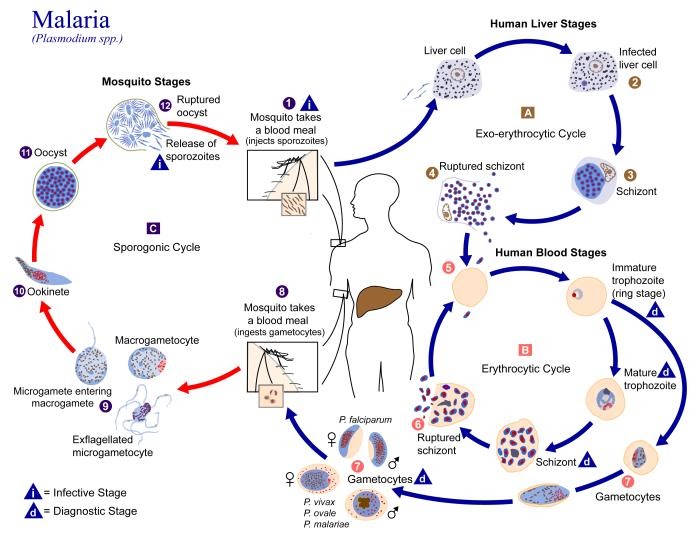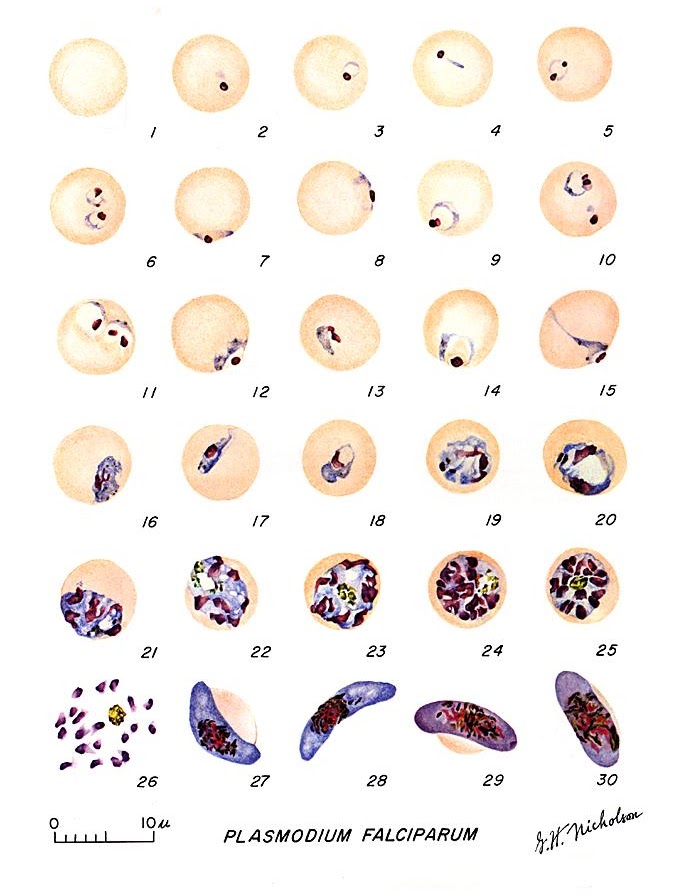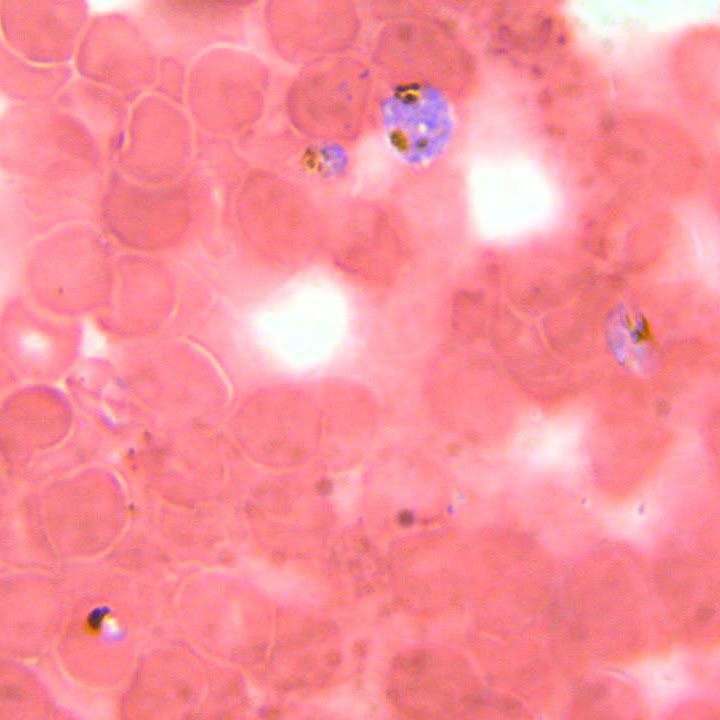Plasmodium falciparium
Plasmodium falciparum is a protozoa parasite, one of the species of the Plasmodium genus that causes malaria in humans. It is transmitted by Anopheles mosquitoes. Different stages of development can be observed, in the Anopheles mosquito (where the parasite reproduces), inside the hepatocytes and inside the red blood cells of the human host. P. falciparum transmits the most dangerous form of malaria with the highest rates of complications and mortality, it is the producer of 80% of all the malaria infections and 90% of deaths caused by the disease. It is more prevalent in sub-Saharan Africa than in other areas of the world.
Apoyo a acciones de Innovación Docente – Vicerrectorado de Estudios / Consultas e incidencias técnicas- Tlf: 96 522 2059 –




